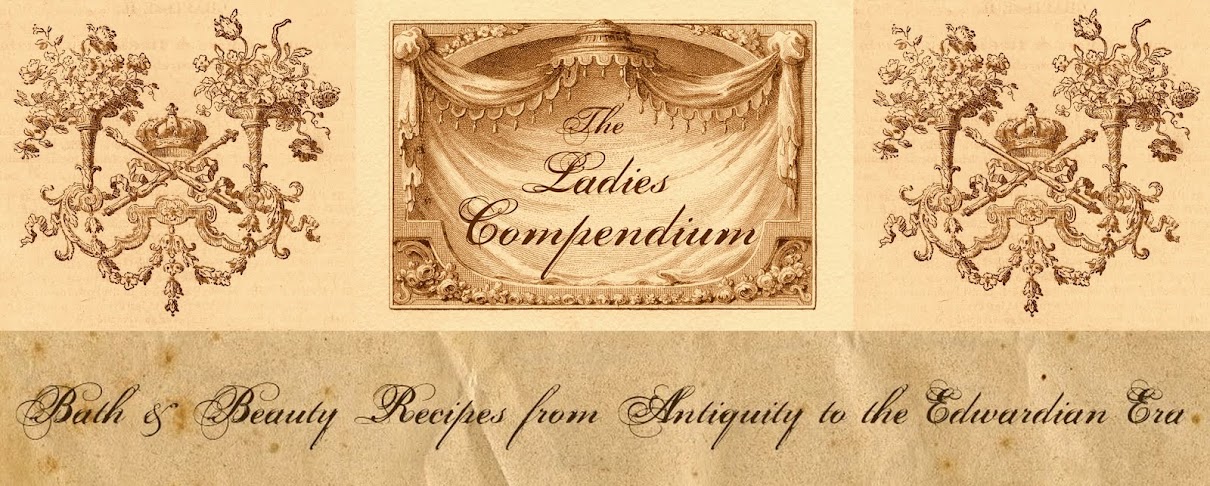Blue saucers and pink saucers contain the most beautiful tints of these colors
Are prepared of different shades by mixing fine carmine with talc powder, in different proportions, say, one drachm of carmine to two ounces of talc, or one of carmine to three of talc, and so on. These
rouges are sold in powder, and also in cake or china pots; for the latter the rouge is mixed with a minute portion of solution of gum tragacanth.
M. Titard prepares a great variety of rouges. In some instances the coloring-matter of the cochineal is spread upon thick paper and dried very gradually; it then assumes a beautiful green tint. This curious optical effect is also observed in "pink saucers." What is known as Chinese book rouge is evidently made in the same way, and has been imported into this country for many years.
When the bronze green cards are moistened with a piece of damp cotton wool, and applied to the lips or cheeks, the color assumes a beautiful rosy hue. Common sorts of rouge, called "theatre rouge," are made from the Brazil-wood lake; another kind is derived from the safflower (Carthamus tinctorius); from this plant also is made:
rouges are sold in powder, and also in cake or china pots; for the latter the rouge is mixed with a minute portion of solution of gum tragacanth.
M. Titard prepares a great variety of rouges. In some instances the coloring-matter of the cochineal is spread upon thick paper and dried very gradually; it then assumes a beautiful green tint. This curious optical effect is also observed in "pink saucers." What is known as Chinese book rouge is evidently made in the same way, and has been imported into this country for many years.
When the bronze green cards are moistened with a piece of damp cotton wool, and applied to the lips or cheeks, the color assumes a beautiful rosy hue. Common sorts of rouge, called "theatre rouge," are made from the Brazil-wood lake; another kind is derived from the safflower (Carthamus tinctorius); from this plant also is made:
PINK SAUCERS.
The safflower is washed in water until the yellow coloring-matter is removed; the carthamine or color principle is then dissolved out by a weak solution of carbonate of soda; the coloring is then precipitated into the saucers by the addition of sulphuric acid to the solution.
Cotton wool and crepe being colored in the same way are used for the same purpose, the former being sold as Spanish wool, the latter as Crepon rouge.

